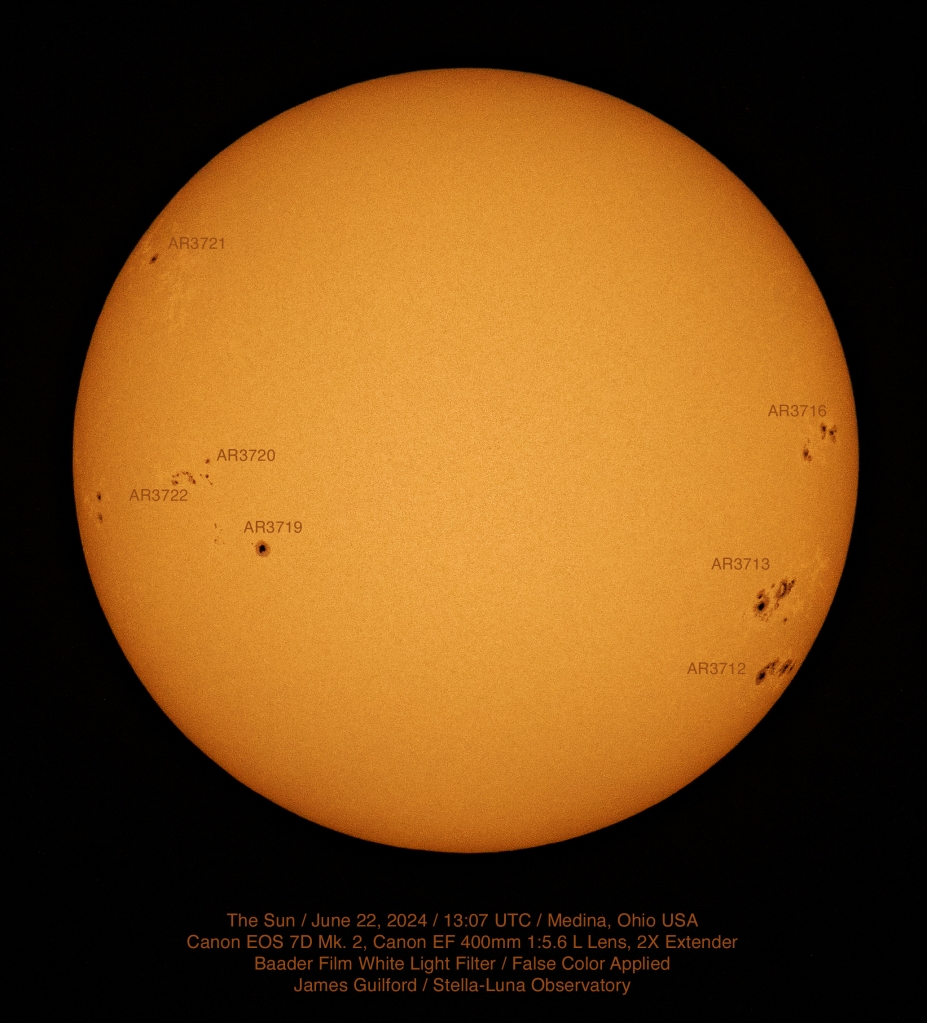
I continued my practice of daily imaging of the sun for some weeks now. While still deciding precisely how to use and display the images I’m collecting, I’m also trying to standardize how the images are captured and establish a workflow in editing; that is in an effort to give the daily pictures the same overall size and appearance except for details, such as sunspots, where we want to observe changes. It’s not as easy as it may seem, especially when attempting to constantly improve image quality. This ought to become simpler once I have a permanent setup protected day-to-day within an observatory structure.
Sunspots AR3713 and AR3712, the more pronounced of the three large groups, have been interesting to watch as they traversed the visible side of Sun. Today (June 22), braving the morning’s already hot and humid conditions, I went to the extra work of setting up the Vixen VC200L Cassegrain telescope in an effort to achieve high quality images of the two — plus AR3716 — big sunspot groups before they disappear over the western solar limb. Both of the active regions reportedly harbor opposing magnetic energies which could, at any time, reconnect and throw off powerful flares but both have been surprisingly quiet. The next few days will be the last when an outburst from AR3713 or AR3712 might affect Earth.

